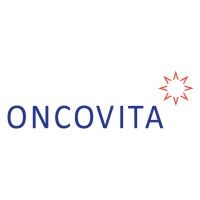预约演示
更新于:2025-05-07
WNV E protein
更新于:2025-05-07
基本信息
别名- |
简介- |
关联
4
项与 WNV E protein 相关的药物作用机制 WNV E protein抑制剂 |
在研机构 |
原研机构 |
在研适应症 |
非在研适应症- |
最高研发阶段临床前 |
首次获批国家/地区- |
首次获批日期1800-01-20 |
作用机制 CHIKV E1拮抗剂 [+2] |
在研机构 |
原研机构 |
在研适应症 |
非在研适应症- |
最高研发阶段临床前 |
首次获批国家/地区- |
首次获批日期1800-01-20 |
作用机制 WNV E protein抑制剂 |
在研机构- |
在研适应症- |
最高研发阶段终止 |
首次获批国家/地区- |
首次获批日期1800-01-20 |
3
项与 WNV E protein 相关的临床试验NCT01206504
Expanded Access to MGAWN1 in Subjects With: Suspected West Nile Neuroinvasive Disease; Suspected West Nile Virus Infection and a Compromised Immune System; or Substantial Accidental Exposure to West Nile Virus
This study will test an experimental drug called MGAWN1 for the treatment of West Nile infections.
开始日期- |
申办/合作机构  MacroGenics, Inc. MacroGenics, Inc. [+1] |
NCT00927953
Phase 2, Stratified, Randomized, Double-Blind, Placebo-Controlled Study to Evaluate Safety and Efficacy of MGAWN1 in Subjects With Laboratory-documented West Nile Fever or Suspected Central Nervous System Infection Due to West Nile Virus
This study will test a drug called MGAWN1 for the treatment of West Nile infections.
开始日期2009-05-01 |
申办/合作机构  MacroGenics, Inc. MacroGenics, Inc. [+1] |
NCT00515385
A Phase 1, Randomized, Double-Blind, Dose-Escalation Cohort Study to Evaluate the Safety, Tolerability and Pharmacokinetics of a Single Intravenous Infusion of MGAWN1, a Neutralizing, Humanized, Monoclonal Antibody (IgG1k) to West Nile Virus, in Healthy Adults
The primary purpose of this phase 1, double-blind, cohort study is to evaluate the safety, tolerability, and pharmacokinetics of escalating doses of MGAWN1 administered as a single intravenous (IV) infusion to healthy adults. Subjects will be enrolled sequentially into one of 5 dose-level cohorts, with 8 subjects in each cohort. Six subjects in each cohort will receive MGAWN1 (a Neutralizing, Humanized, Monoclonal Antibody (IgG1k) to West Nile Virus) and 2 will receive a saline control.
开始日期2007-08-01 |
申办/合作机构  MacroGenics, Inc. MacroGenics, Inc. [+1] |
100 项与 WNV E protein 相关的临床结果
登录后查看更多信息
100 项与 WNV E protein 相关的转化医学
登录后查看更多信息
0 项与 WNV E protein 相关的专利(医药)
登录后查看更多信息
126
项与 WNV E protein 相关的文献(医药)2023-06-16·Acta microbiologica et immunologica Hungarica
West Nile virus infections in Hungary: Epidemiological update and phylogenetic analysis of the Hungarian virus strains between 2015 and 2022.
Article
作者: Mezei, Eszter ; Csonka, Nikolett ; Henczkó, Judit ; Nagy, Anna ; Takács, Mária ; Horváth, András ; Koroknai, Anita ; Nagy, Orsolya ; Magyar, Nóra
2023-06-01·Acta Tropica
A sero-epidemiological investigation of West Nile virus among patients without any records of their symptoms from three different hospitals from Tunisia
Article
作者: Moussa, Mohamed Ben ; Nasraoui, Nadya ; Raies, Ali ; Ben Moussa, Mouna Louisa ; Wölfel, Roman ; Trabelsi, Abdelhalim ; Ayedi, Yosr ; Mastouri, Maha
2022-10-01·Current Infectious Disease Reports
West Nile virus: another emerging arboviral risk for travelers?
Review
作者: Chen, Lin H ; Jani, Chinmay ; Kakoullis, Loukas ; Abdallah, Nour ; Colgrove, Robert ; Page, Stephanie ; Mouchati, Christian
分析
对领域进行一次全面的分析。
登录
或

生物医药百科问答
全新生物医药AI Agent 覆盖科研全链路,让突破性发现快人一步
立即开始免费试用!
智慧芽新药情报库是智慧芽专为生命科学人士构建的基于AI的创新药情报平台,助您全方位提升您的研发与决策效率。
立即开始数据试用!
智慧芽新药库数据也通过智慧芽数据服务平台,以API或者数据包形式对外开放,助您更加充分利用智慧芽新药情报信息。
生物序列数据库
生物药研发创新
免费使用
化学结构数据库
小分子化药研发创新
免费使用


